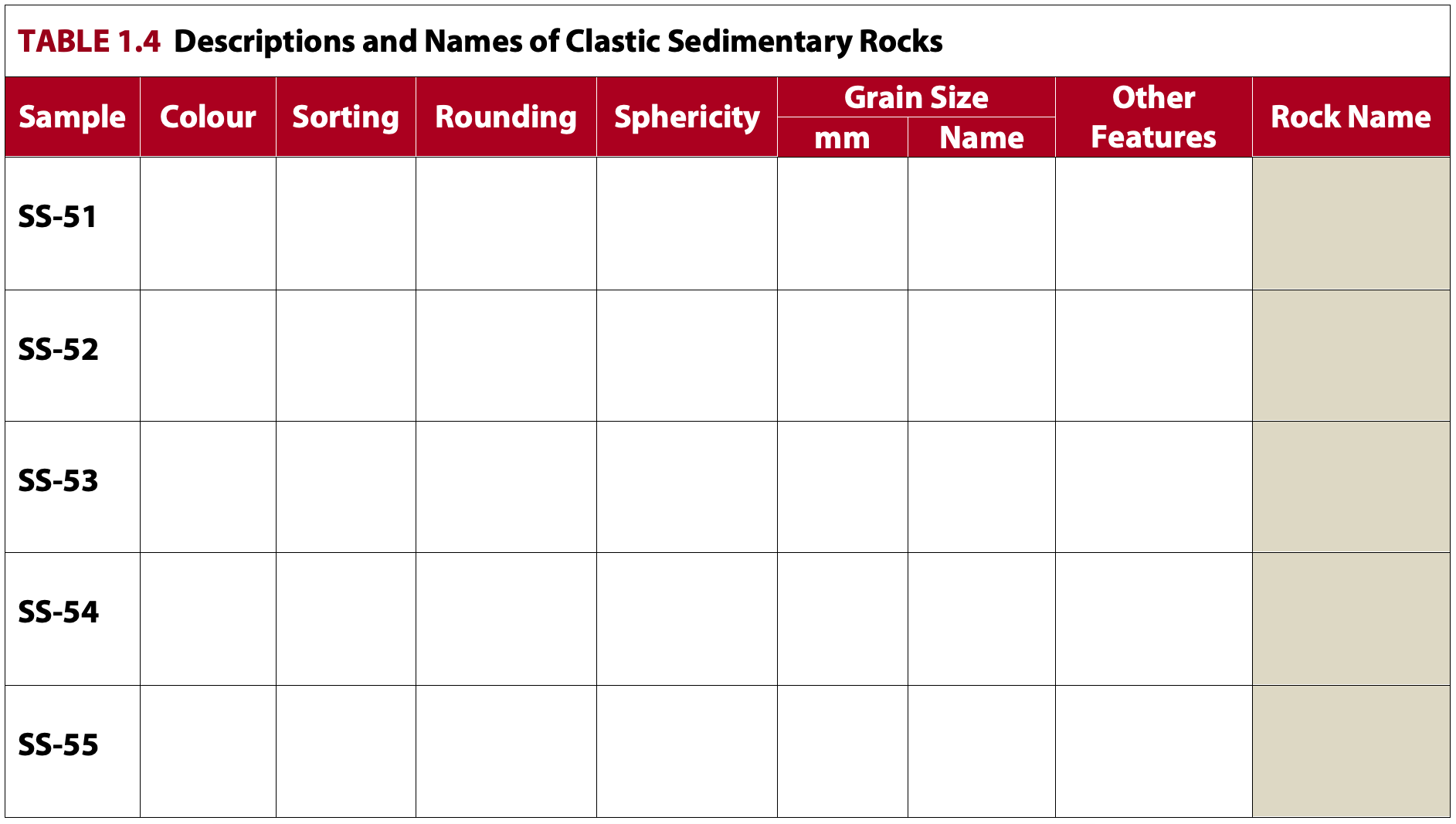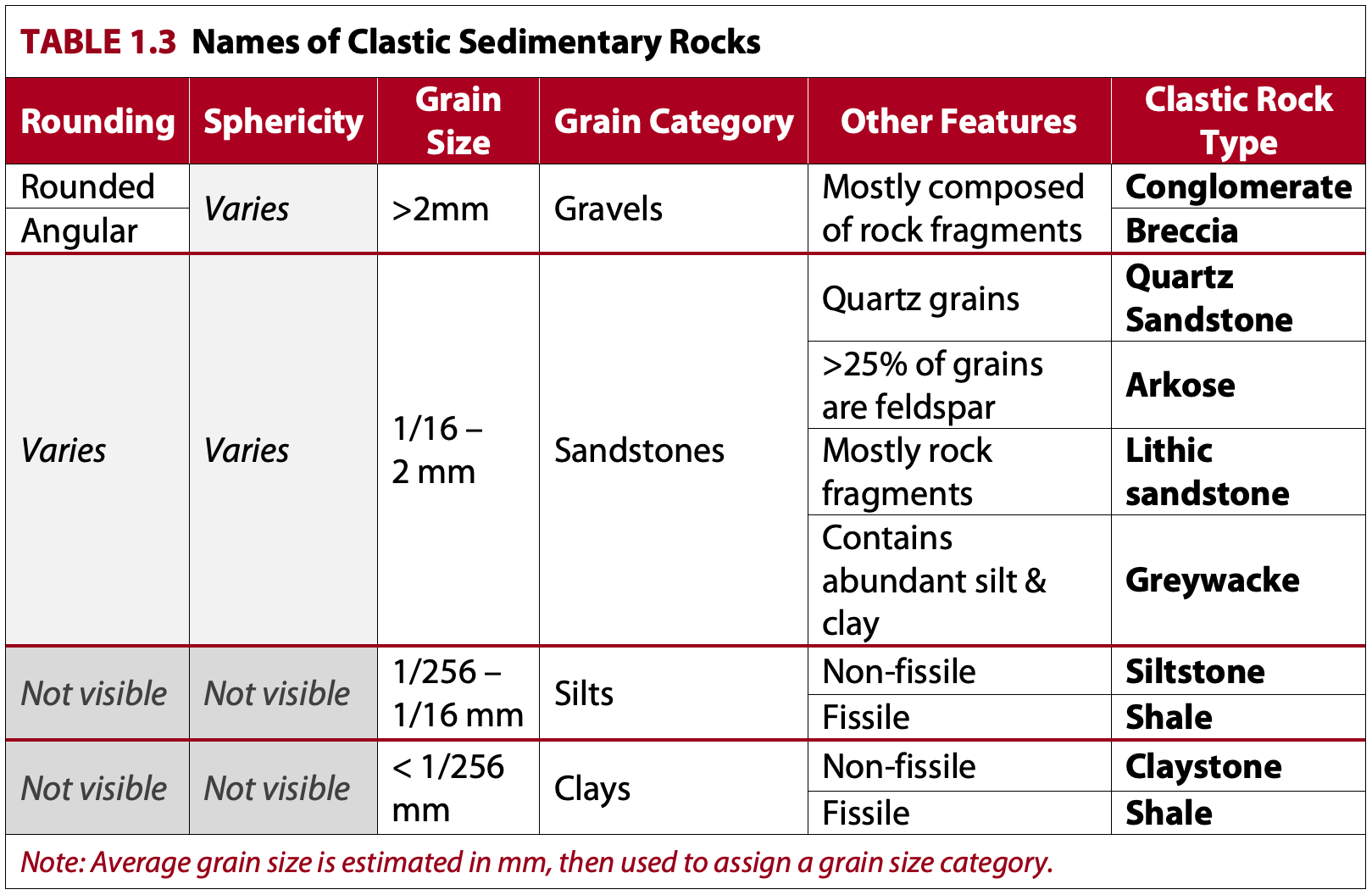Exercise 1.1. Describing Clastic Sedimentary Rocks
What To Do
Download the printer-friendly worksheets in the format of your choice (available at the beginning of Lab 1).
Describe the clastic rock specimens in the Samples section below, and record your answers in Table 1.4. A version of Table 1.4 is provided in the worksheets.
For ease of reference, Table 1.3 is reproduced after Table 1.4 in the Reference Tools section.

Reference Tools

Samples
Advance through each of the following slide decks to see one or more photographs of each sample, and a short video of the sample being rotated. You can expand the slide decks to full-screen mode to see larger images. If you are unable to see the slide decks, click the sample title to open each deck in a new window.
SS-51
SS-52
SS-53
SS-54
SS-55
The slides below show three examples of the same general rock type. Describe the example indicated by your TA, however you may find it useful to look at all three examples to get a better idea of the general characteristics of the rock type.
